Country
Operator Image

Crash of an Avro 748-108-2A in Nailstone: 3 killed
Date & Time:
Jun 26, 1981 at 1811 LT
Registration:
G-ASPL
Survivors:
No
Schedule:
Londres-Gatwick – East Midlands
MSN:
1560
YOM:
1964
Flight number:
DA240
Crew on board:
3
Crew fatalities:
Pax on board:
0
Pax fatalities:
Other fatalities:
Total fatalities:
3
Captain / Total hours on type:
1393.00
Copilot / Total hours on type:
1711
Aircraft flight hours:
34592
Circumstances:
The aircraft was engaged on a mail flight from London-Gatwick Airport to East Midlands Airport. During the initial descent in preparation for landing at its destination, the attendant in the cabin reported that the mechanical indicators on one of the cabin doors were showing an unlocked condition. Shortly afterwards the right hand rear door (baggage door) came open, detached from its hinge mountings and became lodged on the leading edge of the right horizontal tailplane. The aircraft became uncontrollable and went into an increasingly steep dive which terminated in several abrupt pitch oscillations. Both the mainplanes and the horizontal tailplanes were subjected to overstressing in upload which resulted in their detachment from the fuselage. The aircraft was totally destroyed and all three crew members were killed.
Probable cause:
The accident was caused by the baggage door becoming lodged on the leading edge of the right tailplane after it had opened and detached in flight. This produced changes in the aerodynamic characteristics of the aircraft which rendered it uncontrollable resulting in overstressing of the wings and tailplane leading to an in-flight structural failure. A contributory factor was the mis-rigged state of the door operating mechanism which allowed the top and the bottom pairs of claw catches to lose synchronisation. The failure of the door warning arrangements to give adequate warning of door safety was a further contributory factor.
Final Report:
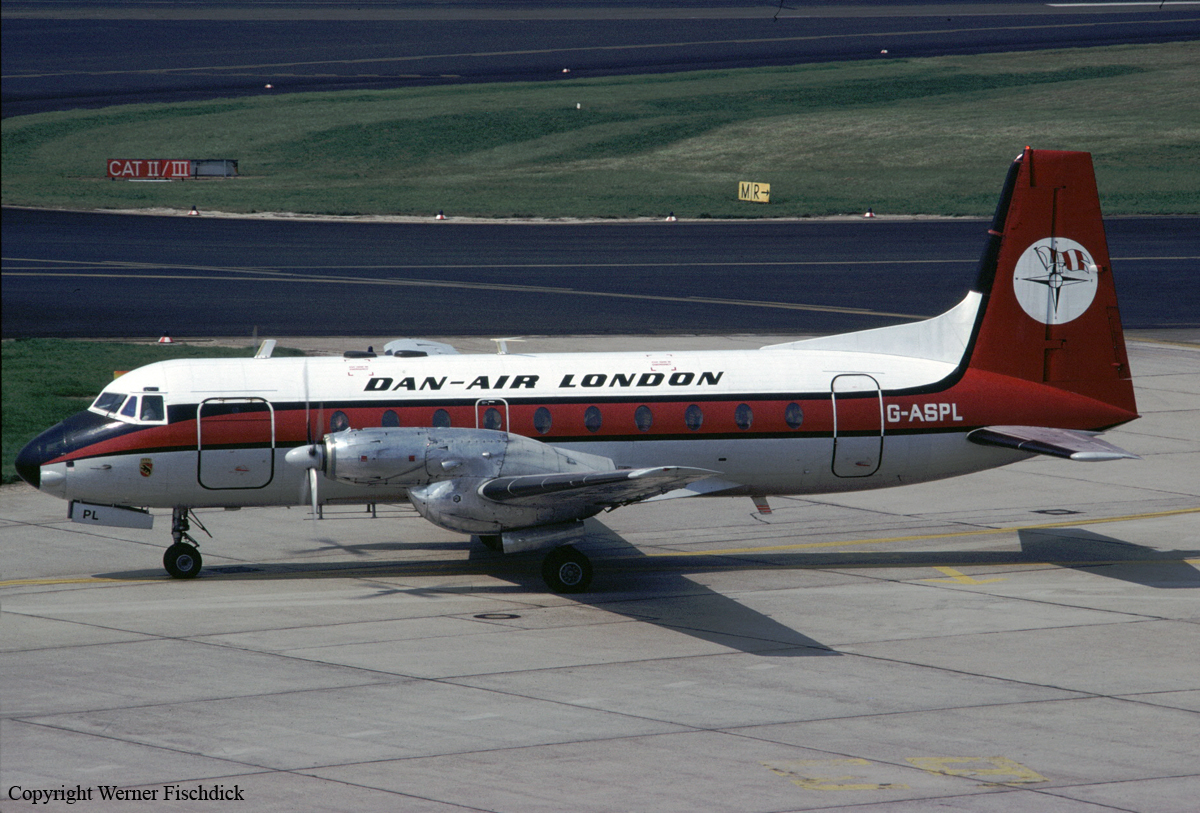
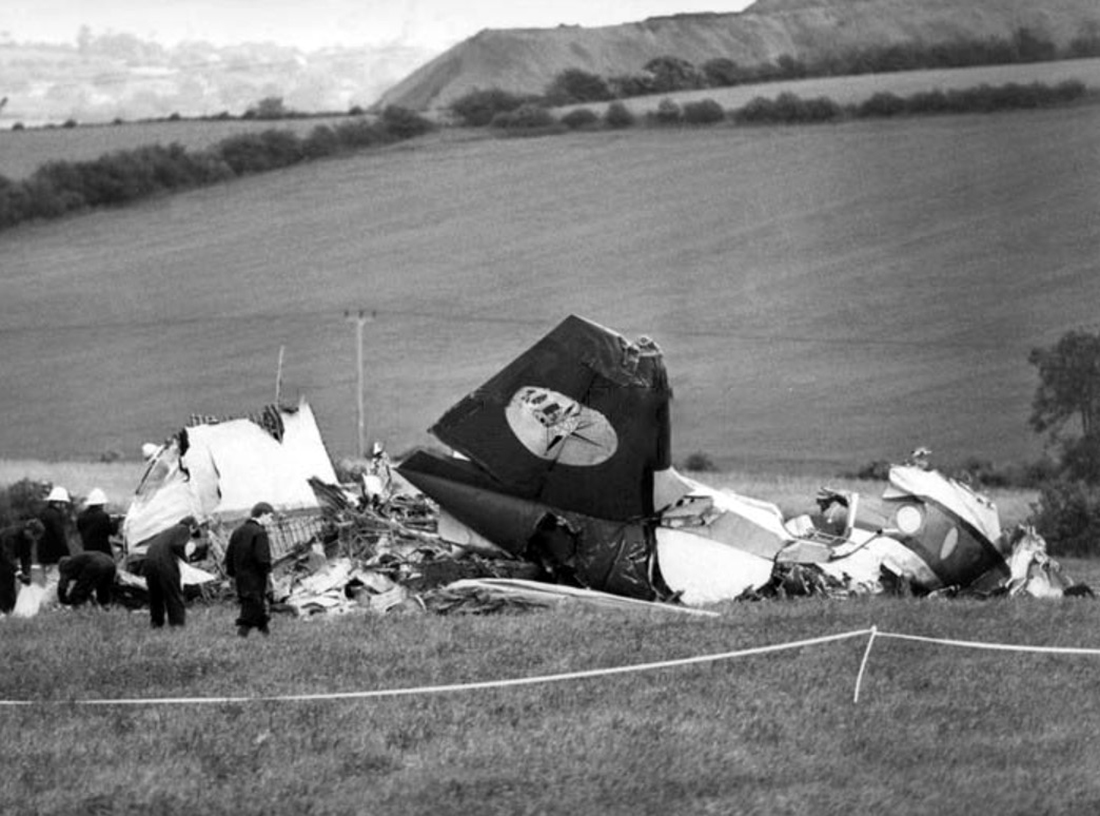
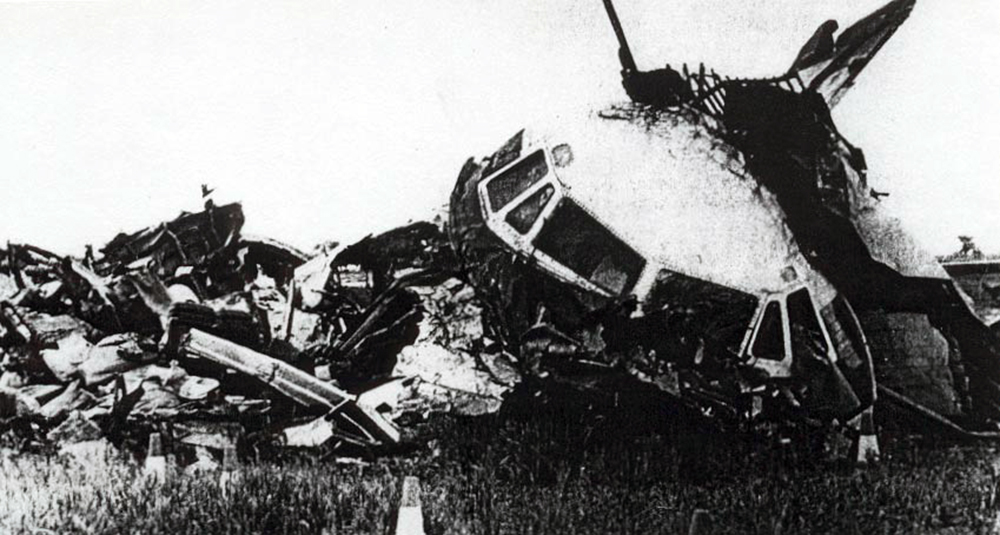
Crash of a Boeing 727-64 in Tenerife: 146 killed
Date & Time:
Apr 25, 1980 at 1321 LT
Registration:
G-BDAN
Survivors:
No
Schedule:
Manchester - Tenerife
MSN:
19279
YOM:
1966
Flight number:
DA1008
Crew on board:
8
Crew fatalities:
Pax on board:
138
Pax fatalities:
Other fatalities:
Total fatalities:
146
Captain / Total hours on type:
1912.00
Copilot / Total hours on type:
618
Aircraft flight hours:
30622
Circumstances:
Dan-Air flight 1008 took off from Manchester Airport (MAN) at 09:22 UTC en route for Tenerife-Norte Los Rodeos Airport (TFN). After an uneventful flight, the crew contacted Tenerife North Airport Approach Control at 13:14, informing them that they were at FL110 and at 14 nautical miles from the TFN VOR/DME. Approach Control replied, "Dan Air one zero zero eight, cleared to the Foxtrot Papa beacon via Tango Foxtrot November, flight level one one zero expect runway one two, no delay." The Dan Air crew repeated the clearance and requested meteorological information, which was given as: "OK runway in use one two, the wind one two zero zero five, visibility six from seven kilometres clouds, two oktas at one two zero metres, plus four oktas at two five zero metres, plus two oktas at three five zero metres, November Hotel one zero three, temperature one six, dew point one, and drizzle." Approximately one minute later Approach Control told the aircraft to descend and maintain FL60. Receipt of this message was acknowledged by the aircraft, whereupon the controller immediately requested it to indicate its distance from the TFN beacon. The crew replied that it was at 7 NM from TFN. At 13:18:48 UTC the aircraft notified Approach Control that it had just passed TFN and that it was heading for the 'FP' beacon. The controller then informed them of an unpublished hold over Foxtrot Papa: "Roger, the standard holding over Foxtrot Papa is inbound heading one five zero, turn to the left, call you back shortly." Dan Air 1008 only replied "Roger" without repeating the information received, which was not compulsory under the ICAO regulations in force at the time of the accident. Almost one minute later, the aircraft the crew reported: "Dan Air one zero eight, Foxtrot Papa level at six zero, taking up the hold" and Tenerife APP replied: "Roger". Instead of passing overhead FP, the flight had passed this navaid at 1.59 NM to the South. Instead of entering the 255 radial, the Boeing 727 continued its trajectory in the direction of 263 degrees for a duration of more than 20 seconds, entering an area with a minimum safety altitude (MSA) of 14500 ft. The co-pilot at that point said: "Bloody strange hold, isn't it?" The captain remarked "Yes, doesn't isn't parallel with the runway or anything." The flight engineer then also made some remarks about the holding procedure. Approach control then cleared them down to 5000 feet. The captain then remarked: "Hey did he say it was one five zero inbound?". It appears that at this moment the information received on the holding flashed back to the Captain's mind, making him realize that his manoeuvre was taking him to magnetic course 150 degrees outbound from 'FP', whereas the information received was "inbound" on the holding, heading 150 degrees towards 'FP'. The copilot responded: "Inbound yeh". "I don't like that", the captain said. The GPWS alarm sounded. The captain interrupted his left hand turn and entered a right hand turn and ordered an overshoot. They overflew a valley, temporarily deactivating the GPWS warning. The copilot suggested: "I suggest a heading of one two two actually and er take us through the overshoot, ah." But the captain continued with the turn to the right, because he was convinced that the turn he had been making to the left was taking him to the mountains. The captain contacted Approach Control at 13:21: "Er ... Dan Air one zero zero eight, we've had a ground proximity Warning." About two seconds later the aircraft flew into the side of a mountain at an altitude of approximately 5450 ft (1662 m) and at 11.5 km off course.
Probable cause:
The captain, without taking into account the altitude at which he was flying, took the aircraft into an area of very high ground, and for this reason he did not maintain the correct safety distance above the ground, as was his obligation. Contributing factors were:
a) the performance of a manoeuvre without having clearly defined it;
b) imprecise navigation on the part of the captain, showing his loss of bearings;
c) lack of teamwork between captain and co-pilot;
d) the short space of time between the information given and the arrival at 'FP';
e) the fact that the holding was not published" (Spanish report)
UK authorities agreed in general with the report, but added some comments to give the report 'a proper balance':
1. the information concerning the holding pattern at FP, which was transmitted by ATC, was ambiguous and contributed directly to the disorientation of the crew;
2. no minimum safe altitude computed for holding pattern;
3. track for holding pattern at 'FP' is unrealistic.
a) the performance of a manoeuvre without having clearly defined it;
b) imprecise navigation on the part of the captain, showing his loss of bearings;
c) lack of teamwork between captain and co-pilot;
d) the short space of time between the information given and the arrival at 'FP';
e) the fact that the holding was not published" (Spanish report)
UK authorities agreed in general with the report, but added some comments to give the report 'a proper balance':
1. the information concerning the holding pattern at FP, which was transmitted by ATC, was ambiguous and contributed directly to the disorientation of the crew;
2. no minimum safe altitude computed for holding pattern;
3. track for holding pattern at 'FP' is unrealistic.
Final Report:

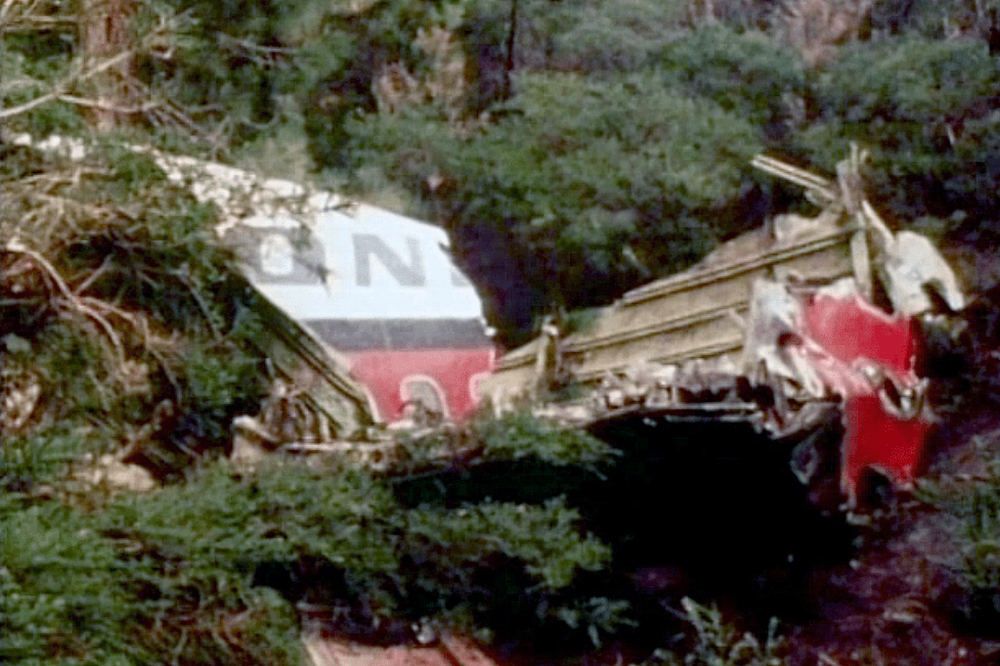
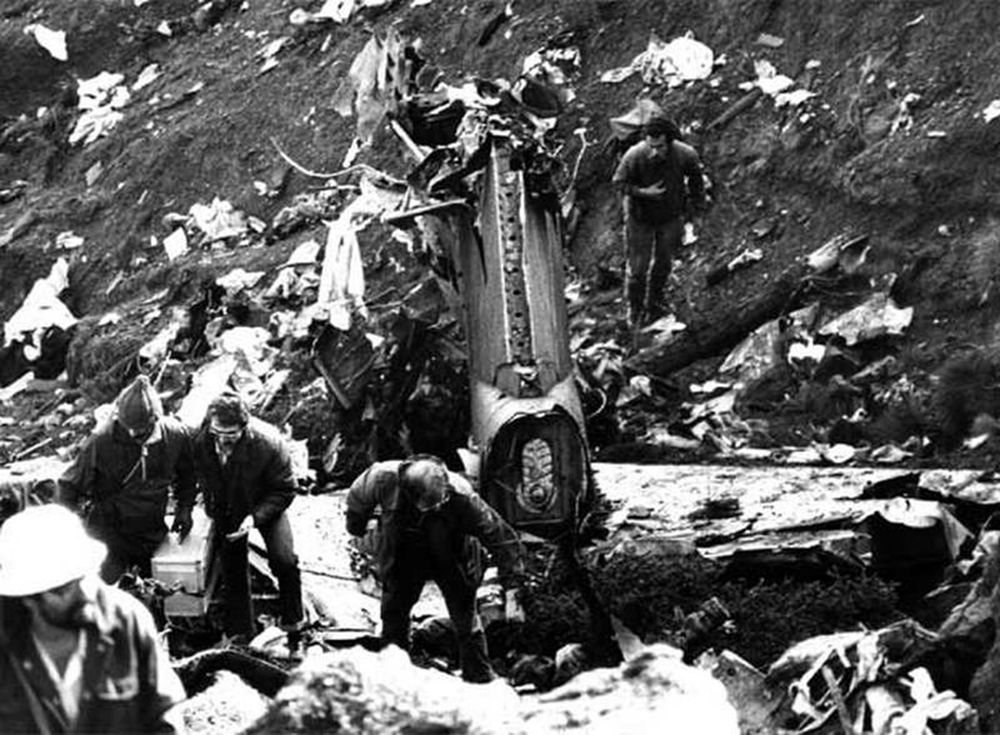
Crash of a De Havilland DH.106 Comet 4 in Newcastle
Date & Time:
Oct 7, 1970
Registration:
G-APDL
Survivors:
Yes
Schedule:
Newcastle - Newcastle
MSN:
6413
YOM:
1959
Crew on board:
11
Crew fatalities:
Pax on board:
0
Pax fatalities:
Other fatalities:
Total fatalities:
0
Circumstances:
The crew (pilots and engineers) was engaged in a local training flight at Newcastle Airport. On approach, the crew forgot to lower the gear and the airplane belly landed. It slid for several yards before coming to rest. All 11 occupants escaped uninjured while the aircraft was damaged beyond repair.
Probable cause:
The crew omitted to carry out the pre-landing checks while practicing a flapless landing.

Crash of a De Havilland DH.106 Comet in Barcelona: 112 killed
Date & Time:
Jul 3, 1970 at 1805 LT
Registration:
G-APDN
Survivors:
No
Schedule:
Manchester - Barcelona
MSN:
6415
YOM:
1959
Flight number:
DA1903
Crew on board:
7
Crew fatalities:
Pax on board:
105
Pax fatalities:
Other fatalities:
Total fatalities:
112
Captain / Total hours on type:
605.00
Copilot / Total hours on type:
189
Aircraft flight hours:
25786
Circumstances:
Comet G-APDN departed Manchester at 1608 for a charter flight to Barcelona. ATC delays in the Paris area resulted in a different route to be flown. At 1753LT the pilot contacted Barcelona ACC. The aircraft was then cleared to descend from FL220 to FL90. At 1759LT the flight switched to Barcelona Approach. Barcelona Approach cleared the crew direct to the Sabadell beacon and cleared them to descend to FL60. While carrying out a left turn to a heading of 140°, as instructed by Barcelona Approach, the crew mistakenly reported passing the Sabadell NDB. At that time another aircraft overflew Sabadell, causing the error to go unnoticed by the controller. The controller then cleared the Comet to descend to 2,800 feet. At approx. 1805LT the aircraft struck beech trees on the northeast slopes of the cloud-covered Les Agudes peak at an altitude of about 3,800 feet and crashed. The wreckage was found in the Sierra del Montseny, near the village of Arbúcies. The aircraft was totally destroyed and all 112 occupants have been killed.
Probable cause:
To sum up, it can be deduced that the combination of erroneous information regarding reporting points, together with the existence of a radar echo over Sabadell NDB (coinciding with the report from the aircraft of passing that reporting point), led both the aircraft and APP to believe, erroneously, that the aircraft was already over Sabadell; this was an involuntary error (on both sides: ATC and aircraft) which was physically impossible to correct when Air Traffic Control realised it.
Final Report:
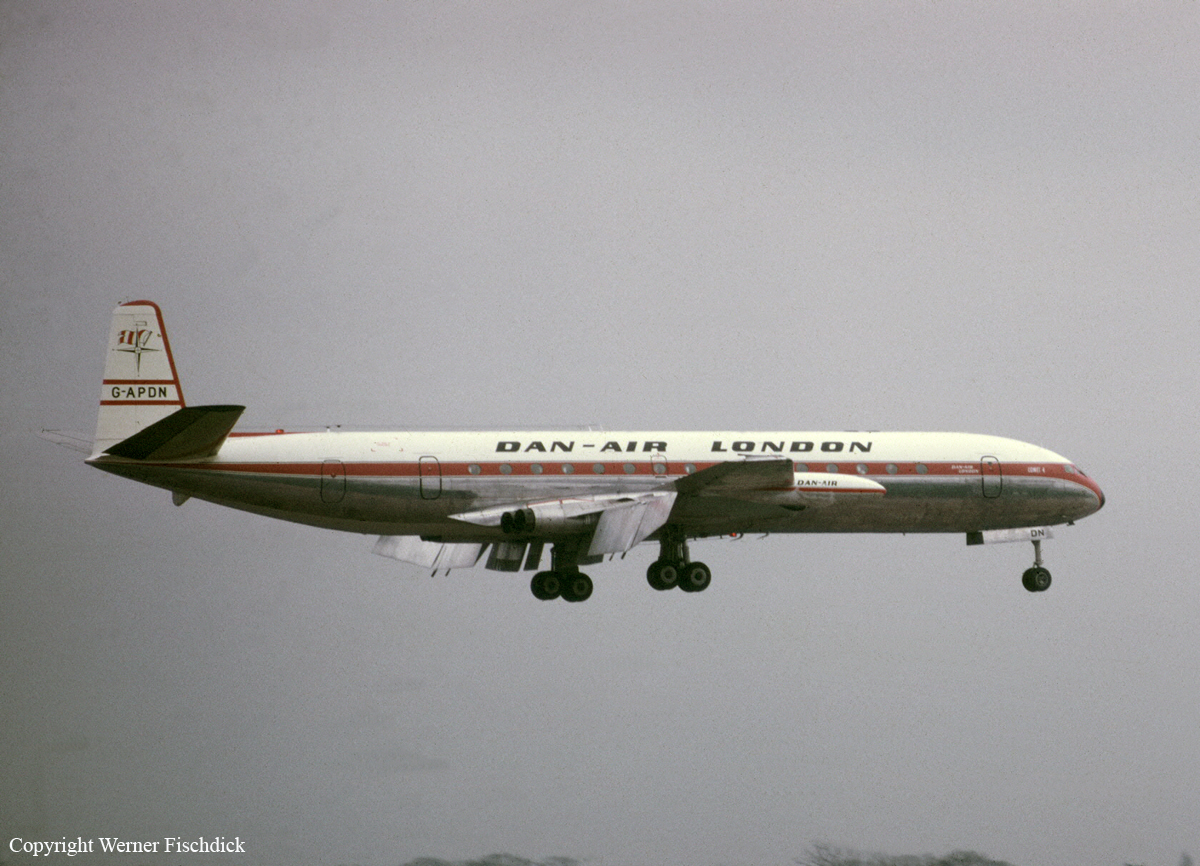
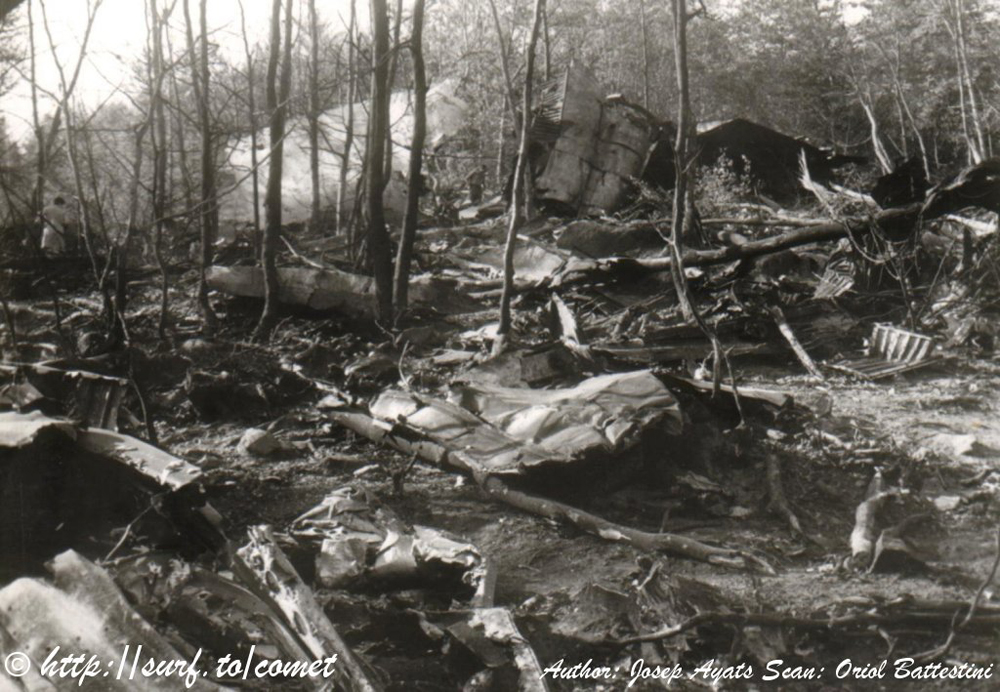
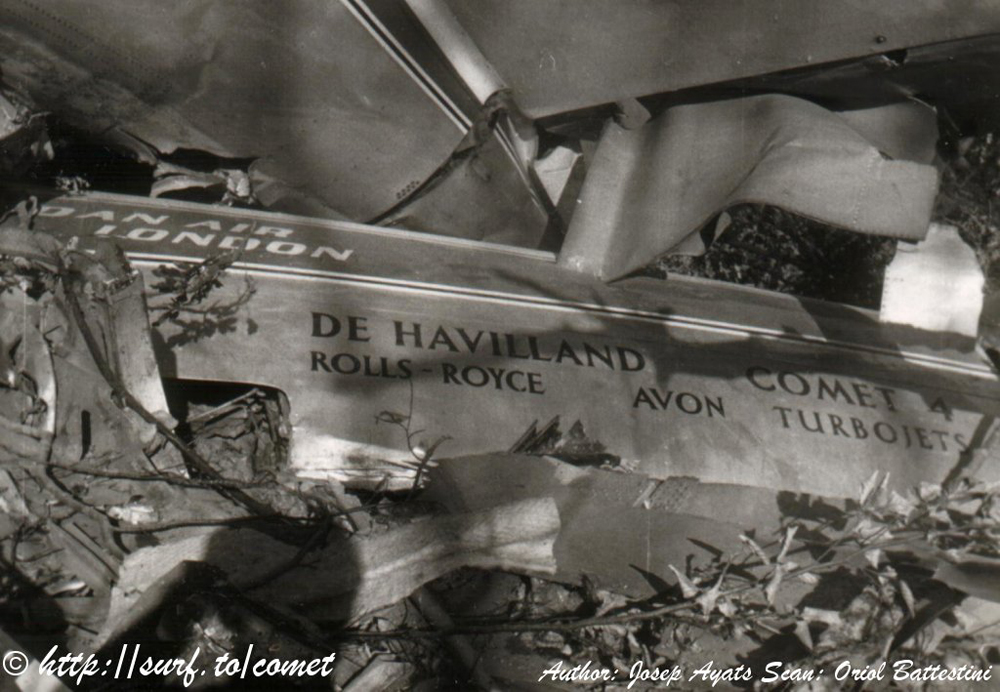

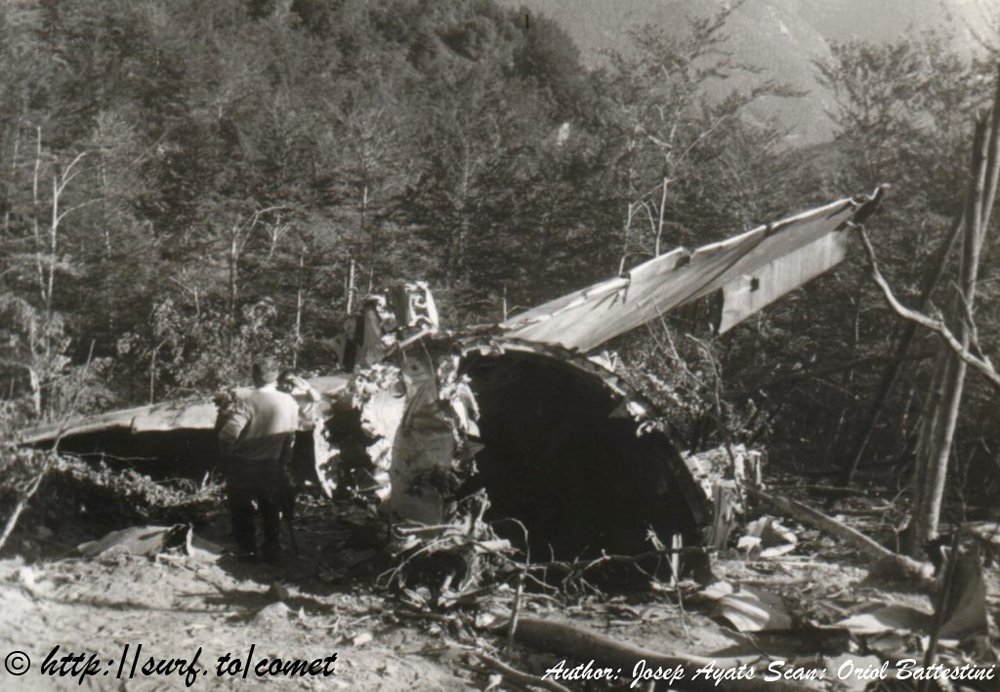
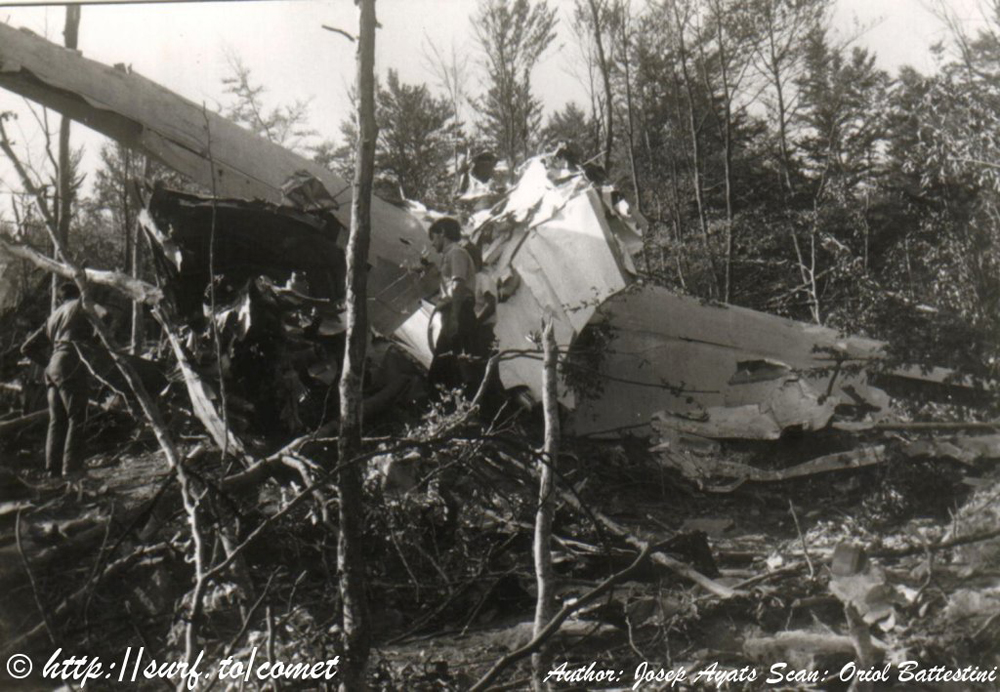
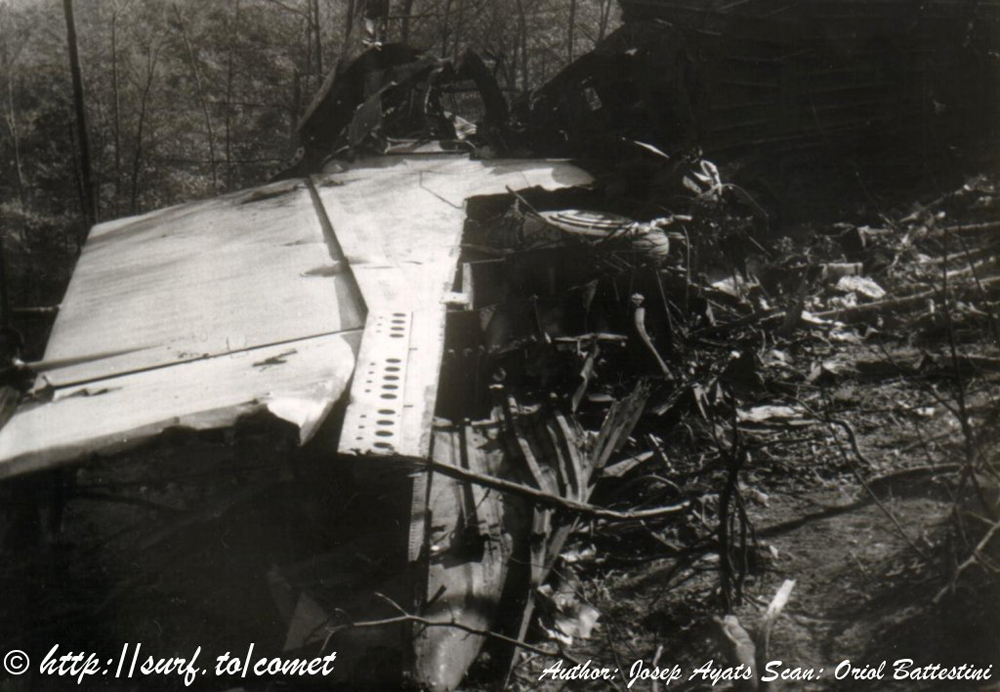

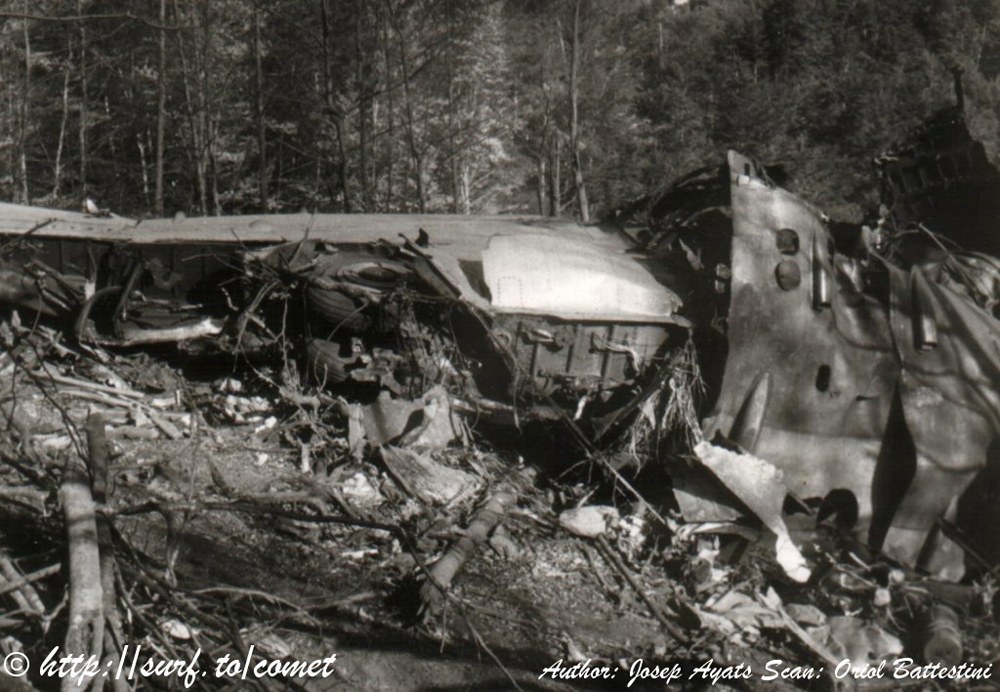

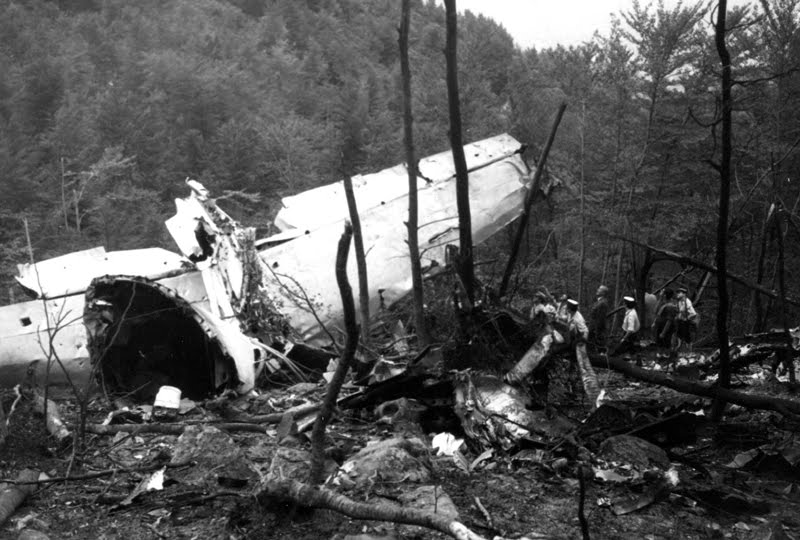


Crash of an Airspeed AS.57 Ambassador 2 in Beauvais
Date & Time:
Apr 14, 1966
Registration:
G-ALZX
Survivors:
Yes
Schedule:
London - Beauvais
MSN:
5220
YOM:
1951
Crew on board:
4
Crew fatalities:
Pax on board:
55
Pax fatalities:
Other fatalities:
Total fatalities:
0
Circumstances:
On final approach to Beauvais-Tillé Airport, the aircraft was too high on the glide after it broke out from the clouds. Rather than making a go around procedure, the crew continued the approach but landed too far down the runway 13. Unable to stop within the remaining distance of 3,500 feet, the airplane overran, lost its left main gear and nose gear and came to rest against a mount of earth. At the time of the accident, the runway surface was wet, which was considered as a contributing factor.
Probable cause:
Wrong approach configuration on part of the flying crew.

Crash of an Avro 685 York C.1 in Gurgaon: 4 killed
Date & Time:
May 25, 1958
Registration:
G-AMUV
Survivors:
Yes
Schedule:
Karachi – New Delhi
MSN:
MW226
YOM:
1946
Crew on board:
5
Crew fatalities:
Pax on board:
0
Pax fatalities:
Other fatalities:
Total fatalities:
4
Circumstances:
While approaching New Delhi-Palam Airport on a cargo flight from Karachi, the crew reported an engine fire. The captain realized it would not be possible to reach the airport so he decided to attempt an emergency landing in Gurgaon, about 15 km south of the capital city airport. The airplane crash landed in a field, slid for dozen yards, struck several obstacles and came to rest in flames. A crew member was rescued while four others were killed. The aircraft was destroyed.
Probable cause:
Failure of the engine number one that caught fire and exploded.